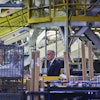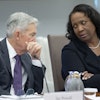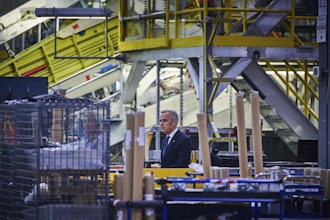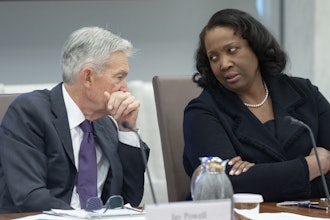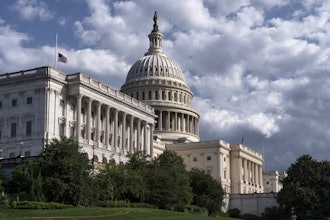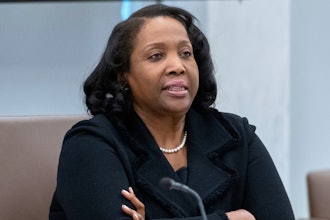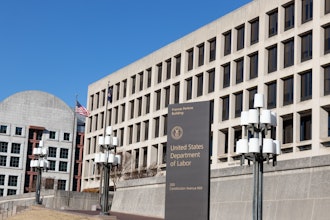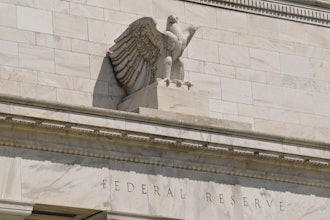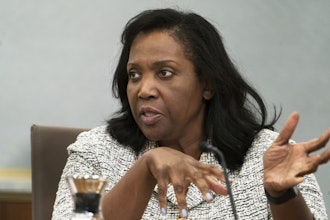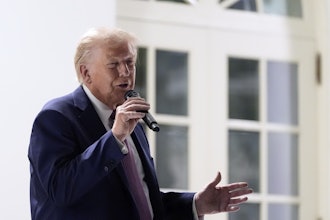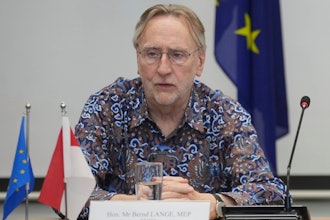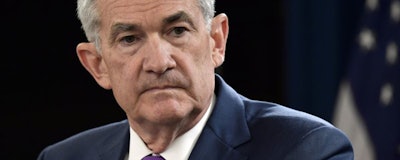
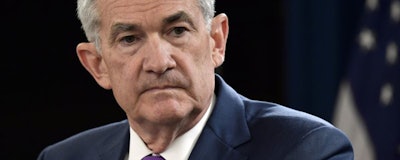
The Federal Reserve is expected Wednesday to raise its benchmark rate for a fourth time this year despite President Donald Trump's repeated assertions that doing so would be a terrible idea.
The president fired off two tweets this week objecting to a rate hike. In one of them, he called it "incredible" that the Fed would consider raising rates again when "the outside world is blowing up around us."
In the lead-up to this week's meeting, Fed officials have signaled that they're set to raise rates Wednesday. Still, after Trump's stream of tweets, continued losses on Wall Street, persistent trade frictions and growing evidence of a global slowdown, some doubts have arisen among Fed watchers. The CME Group's index of investor expectations has put the likelihood of no rate increase Wednesday at 28 percent—an unusually high level of doubt on the eve of an anticipated Fed announcement.
After this week, prospects for the course of interest rates will become more uncertain. Investors hope to glean some clues from the Fed's latest policy statement, along with an updated economic outlook and a news conference by Chairman Jerome Powell. Many analysts think the Fed will signal that it's considering whether to slow or suspend its rate hikes in 2019 to avoid weakening the economy too much. And some predict that the rate increases, which began three years ago, will end altogether next year.
In September, Fed officials collectively forecast that they would raise rates three times in 2019. This week, though, in the view of many analysts, the central bank could indicate that no more than two rate hikes are likely next year.
Yet the central message coming out of Wednesday's meeting may be that the Fed plans to suit its rate policy to the latest economic data. In Fed parlance, it will be "data-dependent."
The idea, some analysts say, is that the Fed may want to pause in its credit-tightening to assess how the economy fares in the coming months in light of the headwinds it faces. Contributing to this view was a speech Powell gave last month in which he suggested that rates appear to be just below the level the Fed calls "neutral," where they're believed to neither stimulate growth nor impede it. Powell's observation suggested that the Fed might be poised to soon slow or halt its rate hikes.
For now, most U.S. economic barometers are still showing strength. The unemployment rate is 3.7 percent, a 49-year low. The economy is thought to have grown close to 3 percent this year, its best performance in more than a decade. Consumers, the main driver of the economy, are spending freely.
In such an environment, the Fed would normally keep gradually raising rates to make sure the economy didn't overheat and ignite inflation. But this time, risks to the economy appear to be rising. From China to Europe, major economies are weakening. Trump's trade conflict with Beijing could, over time, undermine the world's two largest economies.
There are also fears that the brisk pace of U.S. growth this year reflected something of a sugar high, with the economy artificially pumped up by tax cuts and a boost in government spending. The benefit of that stimulus will likely fade in 2019, slowing growth to a more modest pace.
Economists believe that whatever the Fed does, it won't be influenced by the attacks Trump has made on the central bank and on Powell personally since the stock market began tumbling this fall. Powell, who was Trump's hand-picked choice to be chairman, has stressed that the Fed will pursue its mandate of managing rates to maximize employment and stabilize prices, regardless of any outside criticism.
The White House gave no indication that Trump plans to soften his views on the Fed.
"The president is stating his opinion, which he is perfectly within his right to do," his press secretary, Sarah Huckabee Sanders, told reporters Tuesday.

